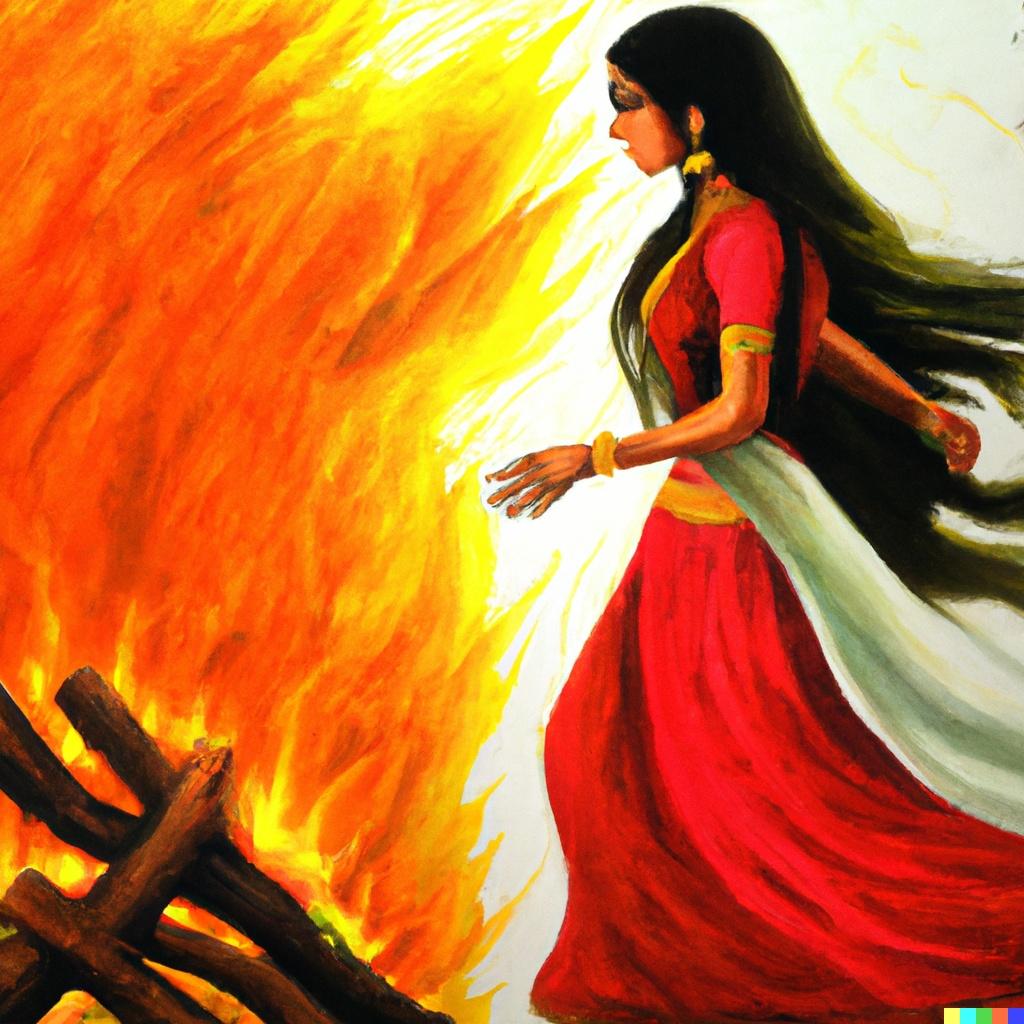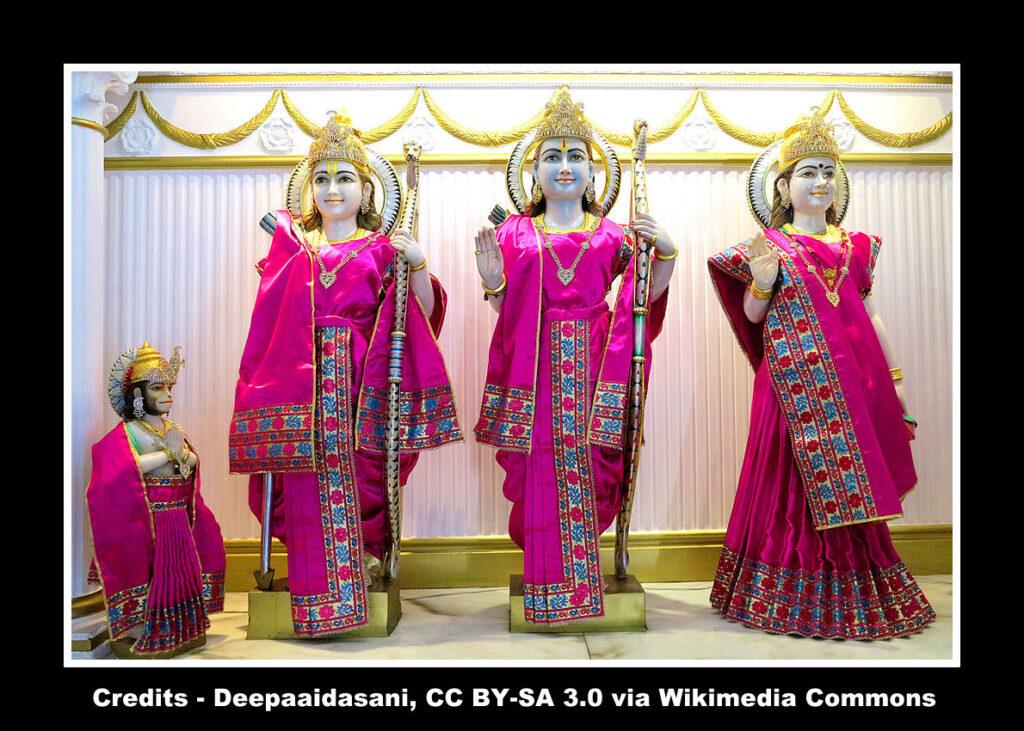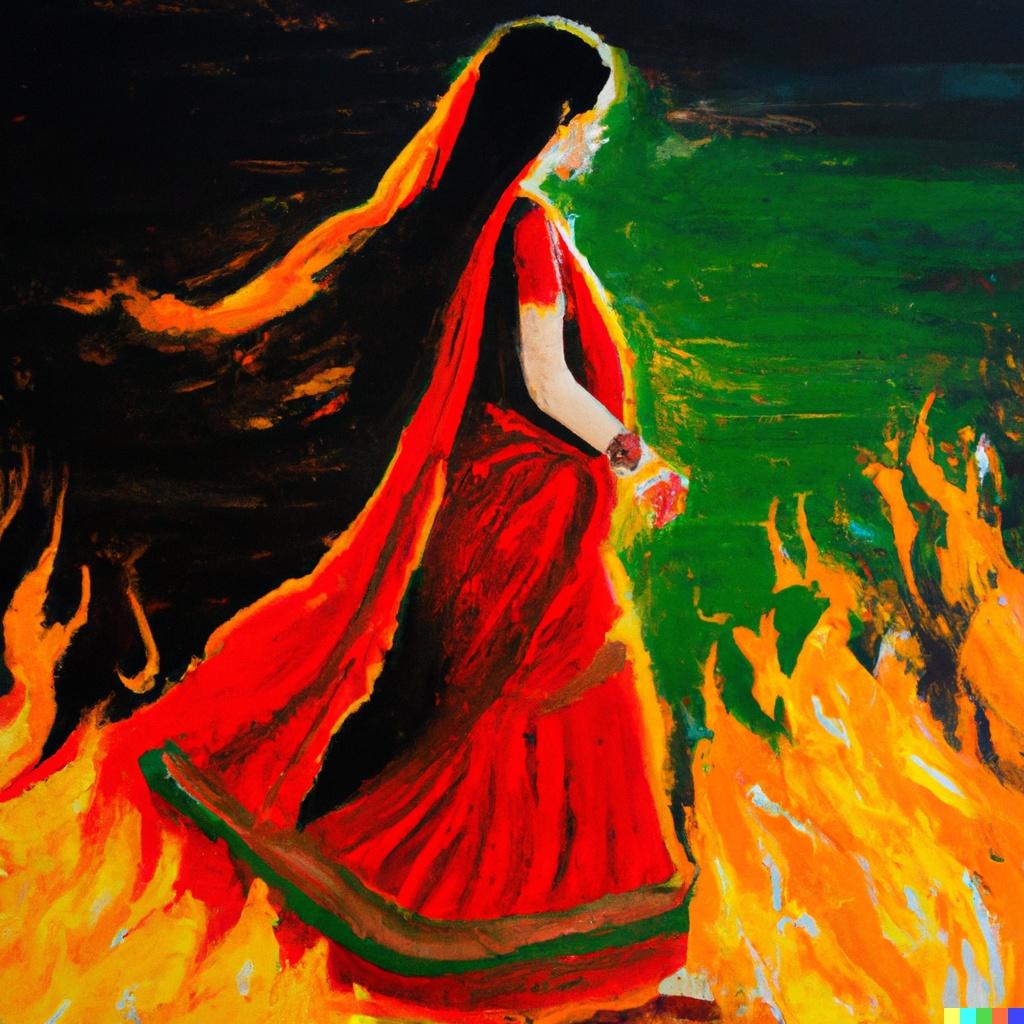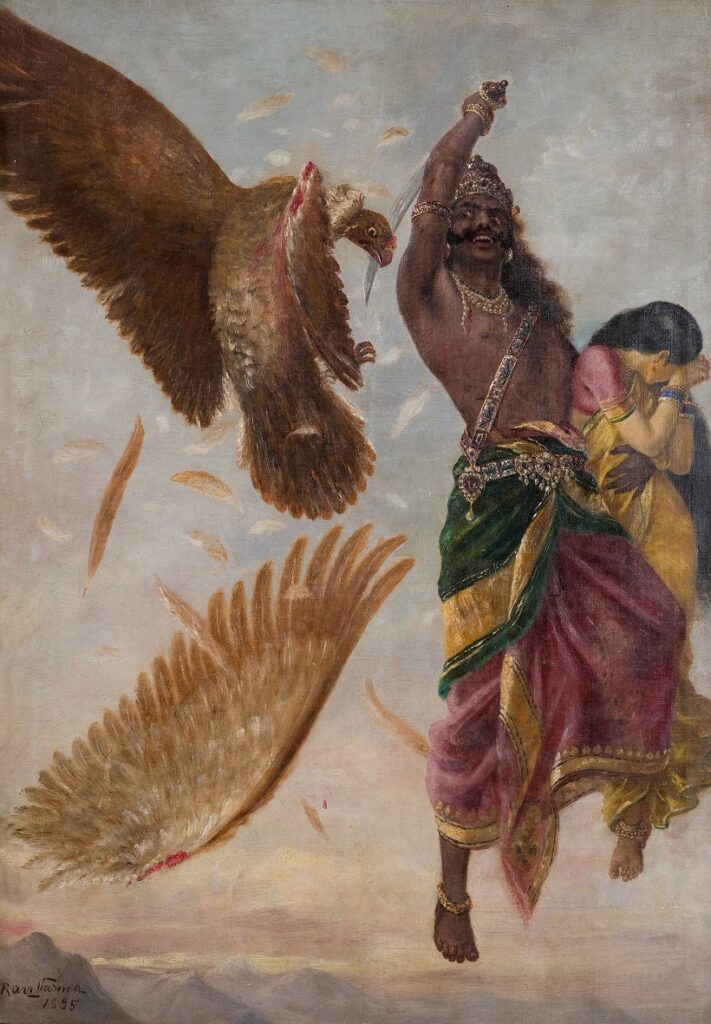
Sita’s Agni Pariksha, the trial by fire that Sita had to endure to prove her purity, stands as one of the most poignant and significant episodes in the Ramayana. This crucial episode unfolds immediately after the culmination of the intense battle of Lanka, where Lord Rama emerges victorious, defeating the formidable Rakshasa king, Ravana. In this article, we embark on an in-depth exploration of this profound event, delving into its intricacies, reasons, and the multifaceted aspects that surround it.
Reunion and Tumultuous Emotions
After the Lanka war had concluded and Rama had vanquished Ravana in combat, Sita was rescued and brought before Rama. Witnessing Rama once more filled Sita with boundless joy, and her countenance radiated like the moon. However, she felt self-conscious when she noticed his serious demeanor. Her limbs quivered, and she stood before him with a lowered head and folded hands.
Rama’s heart ached with conflicting emotions. He yearned to express his love for Sita and reunite with her immediately, yet he dreaded public scrutiny. As a king, he aspired to set the highest moral example for his subjects. Sita had spent nearly a year in another man’s house, and regardless of the circumstances, this would inevitably invite criticism from some quarters. Questions about her purity could surface, an unthinkable stain for the empress.
Rama’s Dilemma and Address to Sita
Gazing upon Sita, whose face was bathed in tears, Rama began, “Oh, blessed one, today I have reclaimed you. I have avenged the insult inflicted upon me through your abduction after conquering my adversaries. You, too, are vindicated, dear princess. The malevolent Ravana is no more.”

Rama paused, wrestling with what he had to convey next. Gathering his composure, he continued addressing the trembling Sita, “Now that I have erased the blemish upon my noble lineage, demonstrating my unwavering truthfulness and resolve, there remains no further purpose in this matter. Gentle lady, my motivation was never to reclaim you as my wife. You have resided in another man’s house for an extended period. How can I bring you back into my fold? Your impeccable character is now under scrutiny. Ravana held you in his arms, viewing you with lustful intent. Consequently, my affection for you has waned. Please, go wherever your heart leads you.”
Sita’s Heartfelt Defense
Sita was shocked and deeply emotional upon hearing Rama’s harsh words. She cried openly and trembled, feeling as vulnerable as a sapling in a storm. Despite her anguish, she composed herself and responded to Rama, defending her innocence and their love. She implored him not to judge all women based on a few actions and expressed her unwavering devotion. In her anger, Sita scolded and criticized Rama, questioning the necessity of his grand mission. She suggested he could have sent Hanuman with a rejection message, sparing them both the hardships of war. She believed his actions were driven by anger and that he had overlooked her unwavering loyalty and divine nature, treating her as an ordinary mortal.

Sita, still weeping, turned to Lakshman. “Oh prince, please prepare a funeral pyre for me. That is my only recourse now. I no longer desire to live, burdened by false accusations. Since my husband has publicly disowned me, I shall enter the fire and end my life.”
Lakshman was furious. How could Rama behave in this manner? He glanced at his brother, but Rama remained impassive, giving a subtle nod. Lakshman understood his wishes and, though deeply pained and bewildered, he constructed a pyre.
Sita’s Agni pariksha
Rama stood there, resembling Yamaraja, the god of justice. No one dared approach or speak to him. Only Sita approached him, moving respectfully around him before approaching the blazing pyre. The princess then offered a prayer with folded hands. “If I have never been unfaithful to Rama, neither in thought, word, nor deed, may the fire god shield me from all sides. Just as my heart has always remained devoted to Rama, may the fire god protect me now. As all the gods bear witness to my purity, let the fire god safeguard me.”
After uttering this prayer, Sita circumambulated the fire and fearlessly entered it before the vast assembly. She seemed like a golden altar with its sacred fire. Gods, celestial sages, Gandharvas, Siddhas, and other divine beings watched Sita walk deep into the flames, and the women in the assembly let out a collective cry as they witnessed her ascend the pyre, like a goddess descending from heaven into the abyss. A gasp of astonishment and shock rippled through the crowd as she vanished into the flames.

Rama was overwhelmed with tears as he watched Sita step into the fire, tormented by the cries of the onlookers. The gods, led by Brahma, questioned his actions from the heavens, wondering why he allowed Sita to enter the flames when he knew his true identity.
Rama, with folded palms, humbly responded, considering himself a mere mortal named Rama, the son of Dasaratha. He deferred to Brahma to reveal his past lives.
Brahma acknowledged Rama as the original creator of the universe, recognizing him as Vishnu and Narayana, the supreme being known by many names. Brahma explained that all gods emanated from Rama, and the cosmos rested on his power. He existed within and outside of all things, dwelling in the hearts of all beings. Brahma affirmed that Rama had taken the form of Rama to defeat Ravana and protect his devoted followers, and now that his mission was accomplished, he should return to his divine abode.
In response, Rama accepted these truths with a bowed head and maintained his silence. At that moment, the fire god emerged from the flames, holding Sita in his arms. The princess was adorned in a crimson robe, radiating like the rising sun. She wore a garland of celestial flowers and was adorned with dazzling gems. Her dark, curly hair framed her face, which exuded transcendent beauty.
Agni, with a commanding voice that echoed like thunder, presented Sita before Rama, affirming her purity and innocence. Agni declared that Sita had never wavered in her thoughts, words, actions, or even her gaze. Despite Ravana’s abduction and captivity, her heart and mind had remained unwaveringly loyal to Rama. She had not entertained a single thought of Ravana, even when faced with his numerous temptations and threats. Agni urged Rama to embrace her with an open heart.
Upon hearing Agni’s speech, Rama was filled with immense joy. Tears welled up in his eyes as he responded to the fire god, acknowledging that Sita needed to undergo this purification ritual. He understood that without it, the world might have condemned him as a fool controlled by lust. Given Sita’s extended stay in Ravana’s captivity, her purity needed to be established before the world, even though Rama was well aware of her unwavering love for him. He believed that, just as the sea could never exceed its boundaries, Ravana could never violate Sita, as she was protected by her own moral strength.

Rama affirmed that Sita was inseparable from him, comparing her to sunlight and him to the sun. He emphasized that just as a virtuous person couldn’t forsake righteousness, he couldn’t part with her.
Sita radiated with happiness and took her place beside Rama on a golden throne. The gods and sages in the assembly praised Rama, and Shiva himself approached Rama, commending him for eliminating Ravana, the menace of the universe. Shiva advised Rama to return to Ayodhya to console his relatives and then rule the world for an extended period.
Why Rama Asked Sita to Undergo Agni Pariksha
Lord Rama recognized Sita as none other than Goddess Lakshmi. All the demigods, including Agni, the fire god, were subordinate to her. Hence, there was no threat to her from passing through the fire. Furthermore, as a King, it was Rama’s responsibility to prioritize the welfare of his subjects over his own desires. During that era, moral and ethical principles held the utmost significance. Thus, it was Rama’s duty to unquestionably establish Sita’s purity, necessitating the enactment of the Agni Pariksha episode.
The Kurma Purana further reveals that Sita, King Janaka’s daughter, is the mother of the three worlds and the epitome of chastity. When Ravana attempted to abduct Sita, she sought refuge with the fire-god, Agni. Agni concealed Sita, deceiving Ravana into taking an illusory form of her (Maya Sita). Meanwhile, the real Sita was transported to the care of Mother Parvati. After Ravana’s demise, Sita Devi underwent a test before the sacred fire. During this trial, Agni, the Fire God, dispelled the illusory form of Sita (Maya Sita), revealing the real Sita Devi and reuniting her with Lord Rama. The below are the concerned verses from Kurma purana –
sitayaradhito vahnis
chaya-sitam ajijanat
tam jahara dasa-grivah
sita vahni-puram gata
pariksha-samaye vahnim
chhaya-sita vivesa sa
vahnih sitam samaniya
tat-purastad aninayat
(Kurma Purana)
–
“When he was petitioned by mother Sita, fire-god Agni, brought forth an illusory form of Sita. Ravana, who had ten heads, was tricked into kidnapping this false Sita. The original Sita was however brought to the abode of the fire-god. This illusory form of Sita was tested and was made to enter into fire. At that time the fire-god brought the original Sita from his abode and delivered her to Lord Rama”